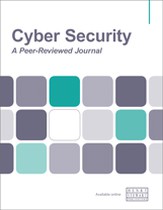Protecting the crown jewels of the government through infrastructure resilience and the DHS Continuous Diagnostics and Mitigation programme
Abstract
For the first time, the US federal government will know the state of its networks at any given time, identify and rank problems for priority resolution, and invest resources in fixing the most significant cyber security problems first. How is this being accomplished? Through the Continuous Diagnostics and Mitigation (CDM) programme established by the Department of Homeland Security (DHS). Through CDM, agencies are provided a risk-based tools framework for cyber security, inclusive of sensors and an associated dashboard to detect vulnerabilities. The approach provides full visibility of the network for timely mitigation and proactive maintenance. This programme is making an impact today across over 97 per cent of the federal government. It has done so by: 1) discovering and protecting endpoints not detected by previous assessments; 2) providing solutions that prevent unauthorised access to the information ‘crown jewels’ of the government; and 3) initiating comprehensive CDM dashboards, both at the agency and federal levels, to provide critical visibility into vulnerabilities across the infrastructure. The CDM programme’s commitment to cyber security matches its commitment to innovation. This paper is premised on discussing the current state of the CDM programme, as well as its future direction.
The full article is available to subscribers to the journal.
Author's Biography
Kevin Cox is Program Manager for the Continuous Diagnostics and Mitigation (CDM) programme within the US Department of Homeland Security’s Office of Cybersecurity and Communications. In this position, he leads the effort working collaboratively with federal agencies to deploy cyber security solutions to: 1) identify agency networks and assets; and 2) protect them and agency data in near-real time against the growing cyber security threats. Prior to joining DHS, he served as the Deputy Chief Information Security Officer (CISO) at the Department of Justice, where he oversaw the organisation’s cyber security continuous monitoring capabilities and the security posture dashboard. He holds MA degrees from West Virginia University and the University of Chicago.
Mark Kneidinger is the Director of the Federal Network Resilience (FNR) Division within the US Department of Homeland Security’s Office of Cybersecurity and Communications. In this position, he leads FNR’s activity in representing CS&C cyber programmes to all 125 executive branch departments and agencies driving change in cyber security risk management across the federal government, working in collaboration with OMB, NSC, the CIO Council and individual agency CIOs and CISOs. Prior to joining DHS, he held IT executive leadership positions in the commercial sector of Fortune 100 corporations, including roles as CTO, vice president and managing partner. He has further held chief information officer (CIO) positions in New York and Virginia and served as a White House appointee in the position of deputy assistant administrator and CIO for the US Agency for International Development (USAID).
